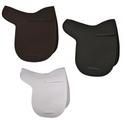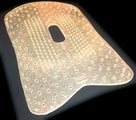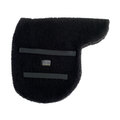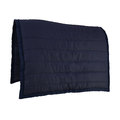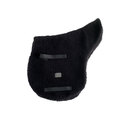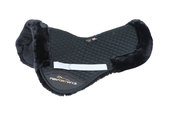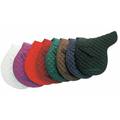You may have heard the term ‘cold back’ used when talking about horses that exhibit soreness and sensitivity in the back muscles, usually when tacked up or exercised. In response to the sight of a saddle or rider, ‘cold-backed’ horses may dip away or put up their backs in readiness of the sudden pressure being placed there - a clear indication that something is wrong.
Often, the term ‘cold back’ is used to describe symptoms of evident discomfort that can’t be explained by medical tests, but too many people self-diagnose ‘cold back’ before consulting a vet. It’s usually the case a problem exists that needs addressing, as it isn’t normal for horses to behave this way unless they are in pain.
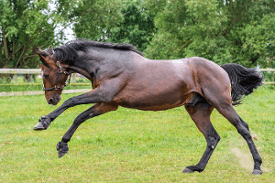 Sometimes ‘cold back’ can be caused by pressure from a poorly fitting saddle, so this is one of the first things to check. Likewise, the posture and position of the rider can have an effect, so consider this when mounting and riding. Problems with your horse’s feet or teeth may also be at play, or previous injuries may be being aggravated.
Sometimes ‘cold back’ can be caused by pressure from a poorly fitting saddle, so this is one of the first things to check. Likewise, the posture and position of the rider can have an effect, so consider this when mounting and riding. Problems with your horse’s feet or teeth may also be at play, or previous injuries may be being aggravated.
Some cold-backed horses will exhibit symptoms when the saddle is initially placed on their back or when they are first mounted; symptoms that may be partially relieved as the horse begins to move around and warm up. Often, however, the symptoms aren’t relieved at all – your horse just becomes accustomed to the pain and appears to exhibit fewer symptoms than before.
If you observe any of the following symptoms, it is best to get your horse checked by a vet:
- Tenderness in the back when you groom or stroke him.
- Flinching, dancing or stomping when the saddle is placed on the back or the girth is tightened. A horse may also dip away or put up its back. You may notice his ears pinned back.
- General reluctance to move or exercise, especially when asked to trot or canter early in the ride. He may try and buck you off or refuse to move altogether.
Tackling the problem will probably require your vet, physio and saddler working together to find the best solution. Your vet will need to perform a physical exam and may even order some diagnostic tests to be done.
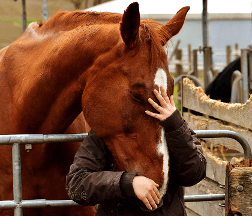 In the absence of a medical problem or an issue with the saddle or the way you ride – issues that can easily be rectified by close observation and adjustment – it may be concluded that your horse is just sensitive or slightly irritable. In this case, there are simple measures you can take to make things a lot more comfortable for your horse.
In the absence of a medical problem or an issue with the saddle or the way you ride – issues that can easily be rectified by close observation and adjustment – it may be concluded that your horse is just sensitive or slightly irritable. In this case, there are simple measures you can take to make things a lot more comfortable for your horse.
- Warm up his back before exercise by using a magnetic blanket, regular blanket or by walking your horse around before mounting.
- Tighten the girth in increments to allow the saddle to ‘settle.’
- Always mount from a mounting block to reduce the strain on your horse’s back.
In addition to these points, be sure to arrange regular (at least annual) checks with your vet and saddler. This way you can keep on top of the problem and notice any changes.
If you have any experience of dealing with cold back, please comment below for our other readers. Alternatively, you can email me with any tips on alleviating the problem and I will add them into the blog: [email protected].
Written by: Hannah


